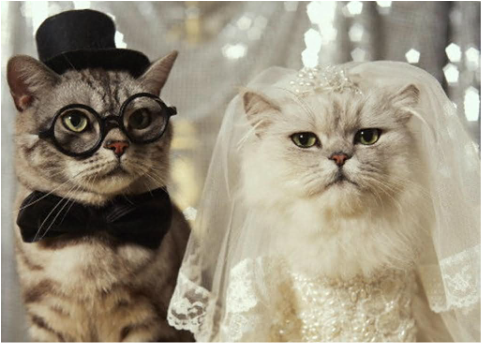
Groom:
Originally this was a compound noun - bridegroom, and originates before 1000 AD.
It is recorded in Old English as brӯdguma, from brӯd (bride) + guma (man); it is related to Old Norse brūthgumi, and Old High German brūtigomo.
Around 1600 AD it appears as it does now, with the final element conformed to groom.
As we all understand its meaning now, it means husband-to-be at a wedding.
Bride:
This also originates before 1000 AD.
It is recorded in Old English brȳd; with Dutch bruid, German Braut, and Old Norse brūthr.
The Gothic bruþs, however, meant "daughter-in-law," and the form of the word borrowed from Old High German into Medieval Latin (bruta) and Old French (bruy) had only this sense. In ancient Indo-European custom, the married woman went to live with her husband's family, so the only "newly wed female" in such a household would have been the daughter-in-law. On the same notion, some trace the word itself to the verbal root *bru- meant "to cook, brew, and make broth". This was likely the daughter-in-law's job.
As we all understand its meaning now, it means newly married woman or a woman about to be married.
 RSS Feed
RSS Feed